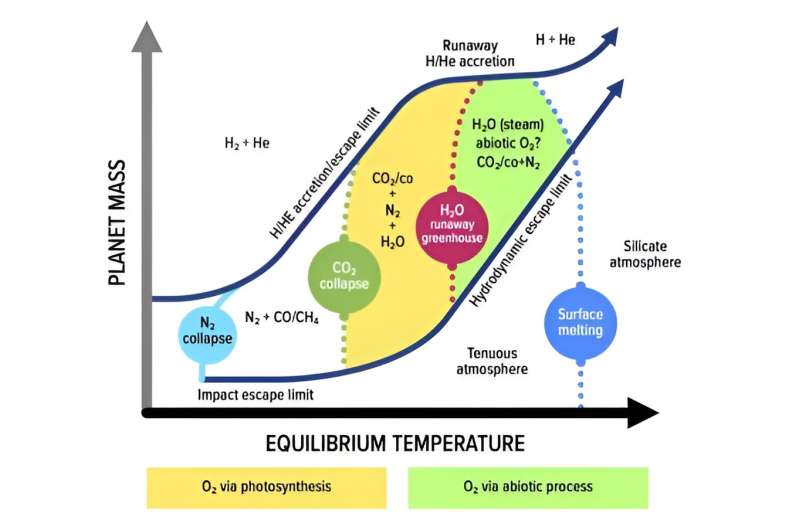This article has been reviewed according to Science X's editorial process and policies. Editors have highlighted the following attributes while ensuring the content's credibility:
fact-checked
preprint
trusted source
proofread
Do technological civilizations depend on atmospheric oxygen?

Nearly 2 million years ago a species of upright apes known as Homo erectus began to use fire. It was a gradual process, from opportunistic users of natural fires to masters able to craft flames from flint and tender. We are their descendants. We are creatures of forge and kiln, hearth and home. Fire has become so central to us that instead of homo sapiens, we could call ourselves homo ignus, the fire-wielding ape. Fire is central to the rise of our civilization. It cooks our food, keeps us warm, and illuminates our night. This raises an interesting question. Could we have built a civilization without fire?
Fire is only possible in an atmosphere with a high oxygen content. In atmospheres with less than about 18% oxygen, you can't have an open flame. Reliable ignition could require a level as high as 20%. Earth's atmosphere is currently 21% oxygen but has been steadily above 18% for only about 200 million years. For much of Earth's history, open flames weren't possible. And Earth is the only planet in our solar system with a significant oxygen level. So while planets are common in the universe, planets where fire is possible could be rare. If civilizations need fire to arise, atmospheric oxygen could be the bottleneck.
That bottleneck is the focus of a recent study published on the pre-print server Arxiv. It looks at the requirements for a planet to have an oxygen-rich atmosphere and finds the constraints are pretty stringent. There are only two main ways to create free oxygen in an atmosphere. The first is the biological origin, where living organisms produce oxygen through photosynthesis. The second is an abiotic process where water vapor in the upper atmosphere is split into hydrogen and oxygen by ultraviolet light.
The study shows that the dominant mechanism depends on the size and temperature of a planet. At Earth temperatures, free oxygen requires living organisms. But if the planet is too small it can't hold a sufficient atmosphere for life, and if it's too large its atmosphere will be so dominated by hydrogen and helium living things can't produce enough oxygen to break the 18% threshold. So residents of an Earth-temperature super-Earth probably can't have open flames.
For hotter planets, the abiotic mechanism dominates, but only if the planet is larger than Earth. Small hot planets won't have a thick enough water vapor to generate lots of oxygen. Venus is a good example of this, where it is too warm for biotic oxygen, but not large enough for abiotic oxygen. This means if we find super-Earths with a rich oxygen atmosphere, then it likely arose by abiotic means. It would still be possible for living things to take advantage of that oxygen, including using fire to create a civilization.
The issue of atmospheric oxygen is complex, and this paper doesn't go into the real details. Its purpose is to outline the constraints on the ability to create fire on potentially habitable worlds. As we look for life in the heavens, we might need to distinguish between potentially habitable worlds and potentially civilized worlds.
The latter may be much more rare than we had once hoped.
More information: Amedeo Balbi et al, The Oxygen Bottleneck for Technospheres, arXiv (2023). DOI: 10.48550/arxiv.2308.01160
Journal information: arXiv
Provided by Universe Today





















